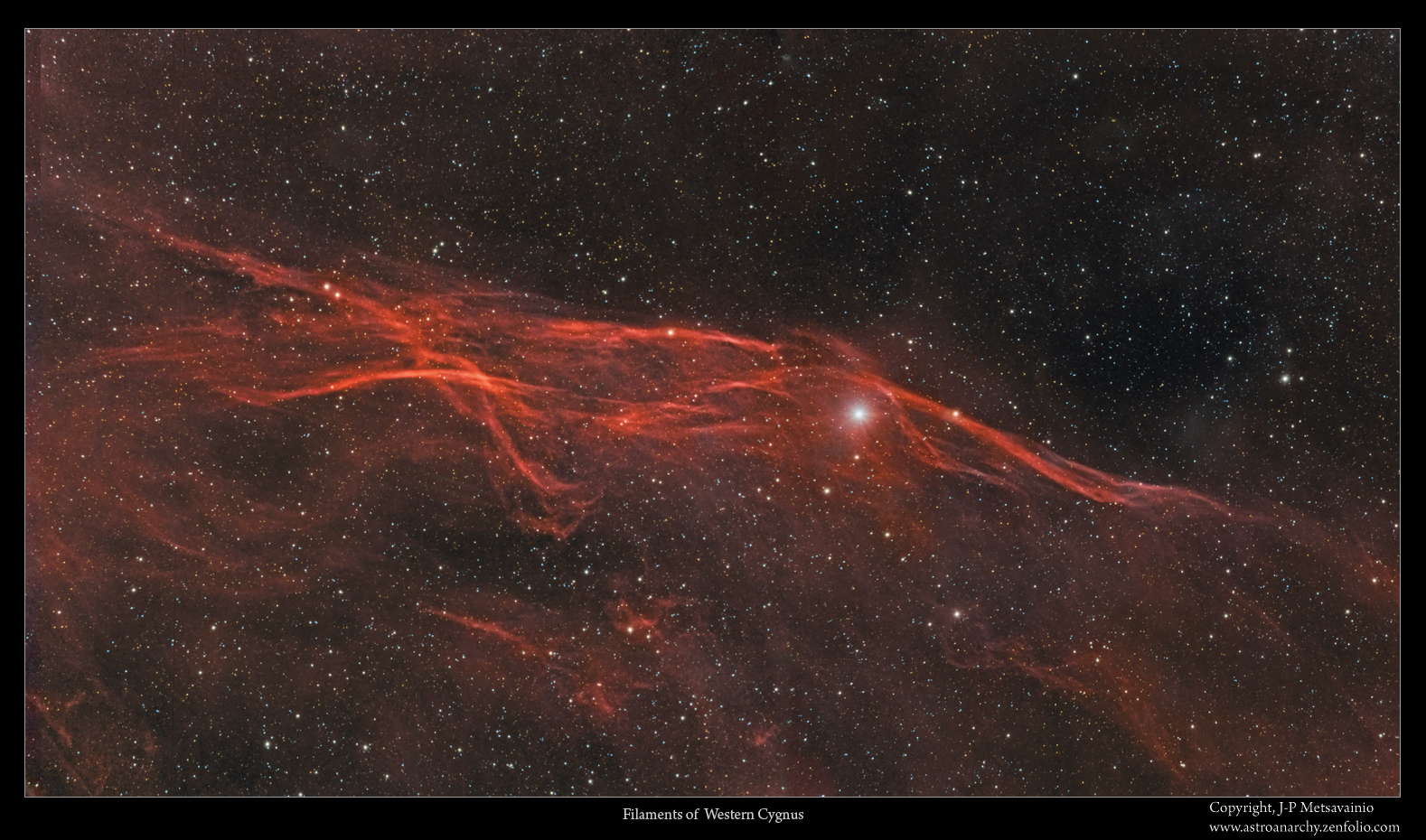COPYRIGHT, PLEASE NOTE
All the material on this website is copyrighted to J-P Metsavainio, if not otherwise stated. Any content on this website may not be reproduced without the author’s permission.
BUY A MUSEUM QUALITY POSTER
BUY A POSTER:https://astroanarchy.zenfolio.com/
Saturday, October 31, 2015
Filaments of the Western Cygnus
I have spent some clear nights by shooting dim gas structures in Western part of the nebula rich constellation Cygnus. This area of Cygnus is not commonly imaged due to low surface brightness and close proximity of more eye catching nebulae. My previous project of Western Cygnus can be seen in this blog post.
This time I shot a formation around the magnitude 3,96 star, OMI02 Cygni. It can be seen as a most brightest star at middle right. This is a two frame mosaic image.
Filaments of Cygnus
Please, click for a large image
Filaments of glowing gas around the star OMI02 Cygni. Image is in mapped colors from the light emitted by the ionized elements. Red=Sulfur, Green=Hydrogen and Blue=Oxygen.
Filaments of glowing gas around the star OMI02 Cygni. Image is in mapped colors from the light emitted by the ionized elements. Red=Sulfur, Green=Hydrogen and Blue=Oxygen.
An experimental starless version
Please, click for a large image
In this starless version the gas filaments can be seen better. (I let a one star for a compositional reasons.)
Image in visual spectrum
Please, click for a large image
Natural color composition from the emission of ionized elements.
Natural color composition from the emission of ionized elements.
This palette is very close to a visual spectrum.
Images in this post are a small part of the Cygnus nebula complex
Please, click for a large image, 2200 x 1400 4,2MB
Technical details
Processing work flow
Image acquisition, MaxiDL v5.07.
Stacked and calibrated in CCDStack2.
Deconvolution with a CCDStack2 Positive Constraint, 21 iterations, added at 25% weight
Color combine in PS CS3
Levels and curves in PS CS3.
Imaging optics
Celestron Edge HD 1100 @ f7 with 0,7 focal reducer for Edge HD 1100 telescope
Canon EF 200mm f1.8 lens
Mount
10-micron 1000
Cameras and filters
Imaging camera Apogee Alta U16 and Apogee seven slot filter wheel
Guider camera, Lodestar x2 and SXV-AOL
QHY9 for S-II and O-III emsissions
Astrodon filter, 5nm H-alpha
Baader O-III
Baader S-II
Exposure times
H-alpha, 24 x 1200s = 8h
O-III, 8 x 600s = 1h 20min.
S-II, 8 x 600s = 1h 20min.
Total 10h
Labels:
Narrowband color images,
nebula
Subscribe to:
Post Comments (Atom)


















No comments:
Post a Comment